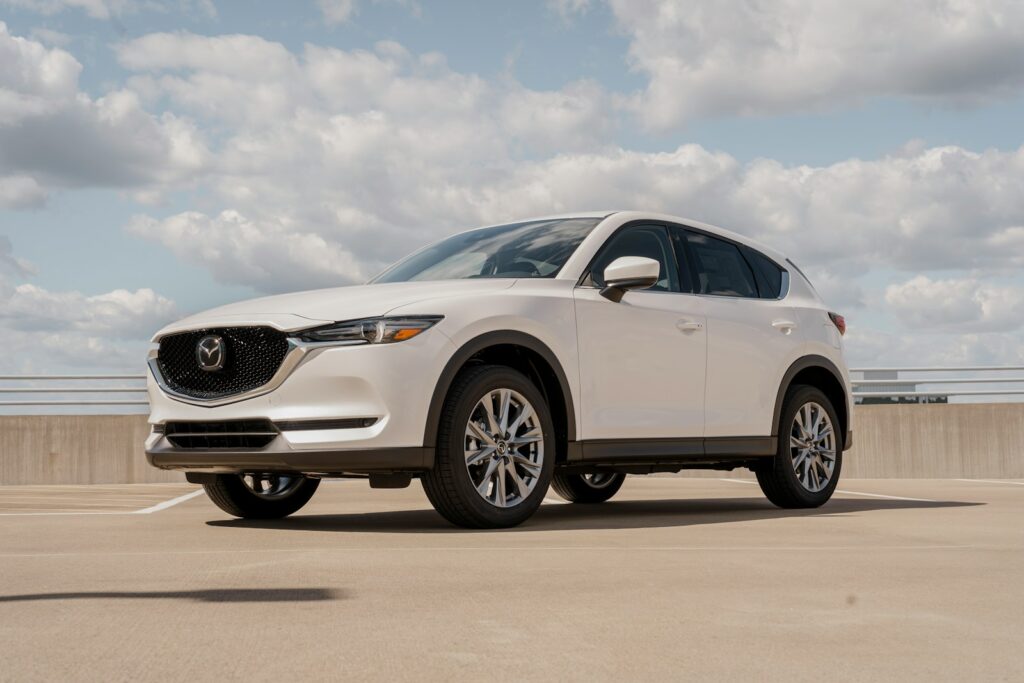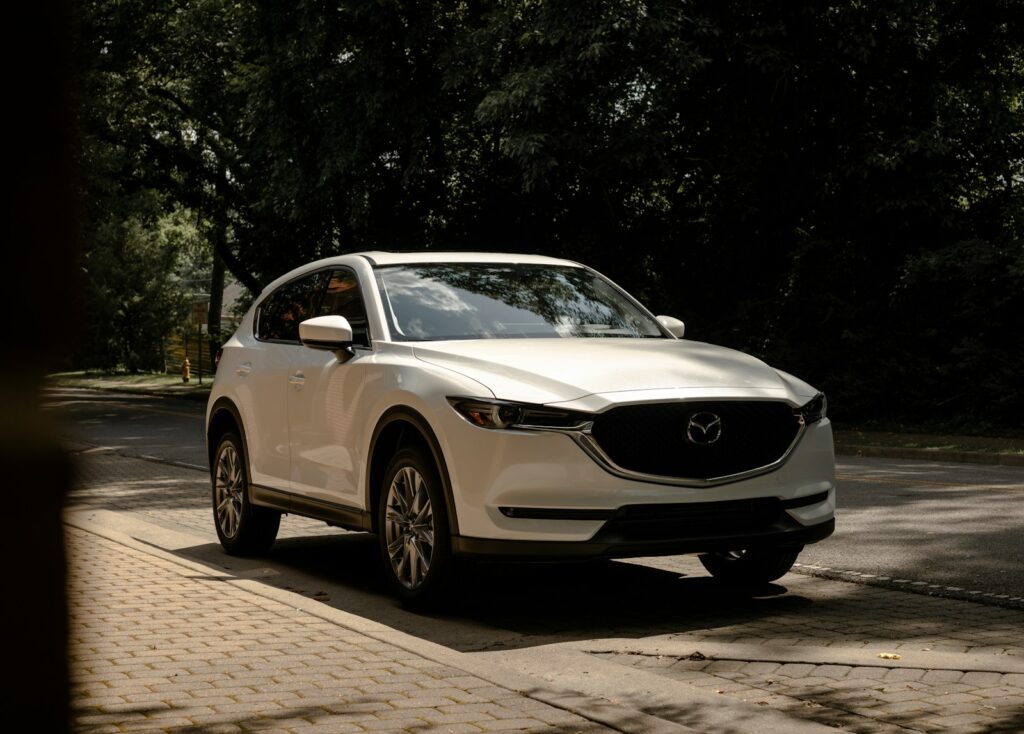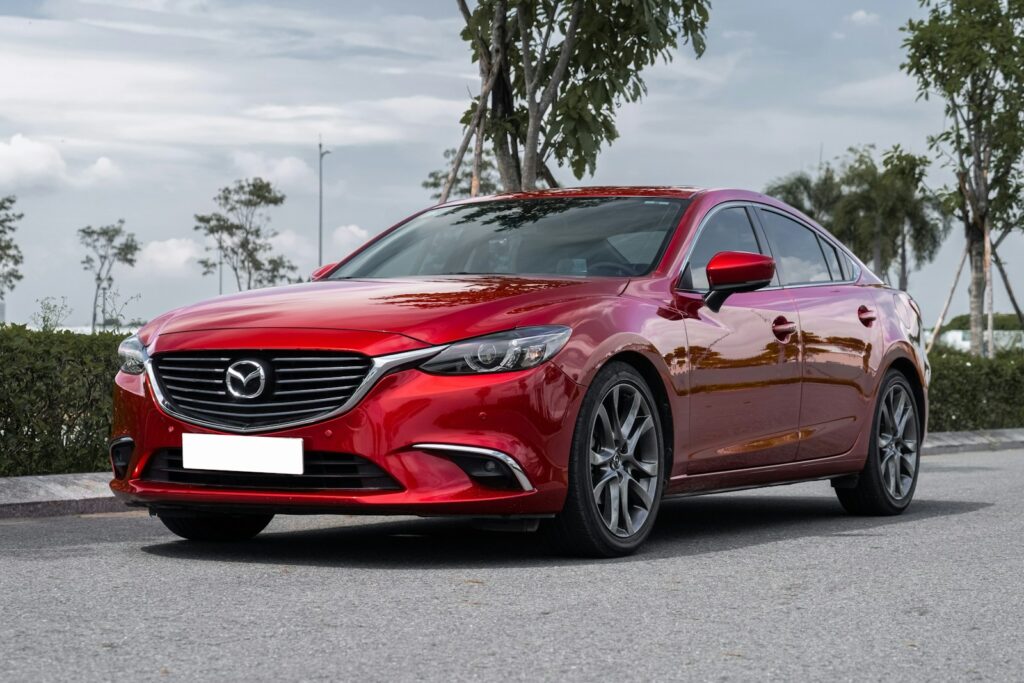
Negotiating the price of a new car is an experience that polarizes many. For some, it’s a challenging but rewarding tradition, a strategic dance where skill can shave thousands off the final price. For others, it’s an annoying back-and-forth that must be endured, a gauntlet of sales tactics and hidden figures. Regardless of your personal inclination, one truth remains universally acknowledged: mastering the art of car negotiation can significantly impact your financial outcome, transforming a potentially stressful purchase into a triumphant acquisition.
The journey to securing an optimal car deal doesn’t begin on the dealership lot, nor does it start with the first handshake with a salesperson. Instead, the real groundwork is laid long before you ever set foot in a showroom. It’s a phase of meticulous preparation, diligent research, and strategic financial planning that empowers you, the consumer, with the confidence and knowledge needed to navigate even the most seasoned sales professional. As with almost everything, doing your homework before setting foot in the dealership will undoubtedly pay off when it comes time to talk dollars and cents.
This in-depth guide is meticulously crafted to arm you with the essential tactics and insights dealers hope you never discover. We’ll delve into the crucial preparation steps and initial negotiation strategies, ensuring you approach the car-buying process with clarity, control, and a clear path to the best possible price. By understanding these fundamental principles, you’ll be well on your way to driving home in the car you want, at a price you’ll be proud of.

1. **Set Your All-In Budget**Buying a new or used car often represents one of the most significant purchases in a lifetime, making a clear, realistic, and “all-in” budget your non-negotiable first step. This foundational figure acts as your anchor, preventing you from overpaying or succumbing to upgrade pressures. Start with the “20/4/10 rule”: ideally, aim for a 20% down payment (including trade-in), a loan term no longer than four years, and monthly payments not exceeding 10% of your take-home pay. These guidelines help establish a sensible framework for what you can truly afford.
Beyond these rules, remember that personal finance is unique. Your budget should reflect your individual priorities. Utilize an online car payment calculator, but ensure you’re using an estimate for the “out-the-door” price, not just the MSRP. The MSRP often omits crucial elements like taxes and fees that can add thousands to the final cost, so accounting for these upfront prevents unwelcome surprises and solidifies a truly affordable monthly commitment.
This initial budgeting process is critical for resisting the temptation to overspend once you are engaging with dealerships. Knowing your financial limits empowers you to walk away from deals that exceed your comfort zone, reinforcing your goal is a smart purchase, not just any purchase. It sets firm expectations, allowing you to maintain control throughout the car-buying journey.
Read more about: Seriously What Happened? 12 Once-Iconic Deli Meats Families Just Don’t Slice Anymore.

2. **Get Pre-Approved Financing**Securing pre-approved car financing from your bank or credit union before visiting a dealership is a powerful tactical advantage that shifts control into your hands. This proactive step provides two key benefits: it arms you with leverage to negotiate better interest rates, and it establishes a firm limit on your budget. When you have a pre-approval in hand, you can inform the salesperson that you already have a loan lined up, challenging them to beat your secured rate. This often spurs dealerships to find more competitive financing offers, as they know you have a viable alternative.
The second advantage is crucial for budget discipline. If you’re pre-approved for, for example, $30,000, this figure becomes your absolute spending ceiling. It effectively eliminates the temptation to overpay for higher trim levels or unnecessary options that might be suggested during negotiations. This concrete limit keeps your focus squarely on finding a vehicle within your means, preventing emotional decisions from inflating the purchase price beyond what you are comfortable affording.
While dealership financing can be convenient, it’s not always the most beneficial for the buyer, sometimes including marked-up interest rates or incentives for the dealer. By obtaining pre-approval, you’ve already shopped for the best rates, ensuring you start the negotiation process with the most favorable terms available to you. This strategy allows you to concentrate solely on the vehicle’s price, rather than getting entangled in complex and potentially disadvantageous financing details presented by the dealer.
Read more about: Steering Clear of Financial Pitfalls: 14 Critical Mistakes First-Time EV Buyers Must Avoid

3. **Understand Key Car Pricing Terms**To navigate car negotiations effectively, you must understand the industry’s specific pricing terminology. This knowledge empowers you to avoid confusion and identify potential negotiation points. The **MSRP (Manufacturer’s Suggested Retail Price)** is the automaker’s sticker price, varying by trim and equipment, and while a common starting point, dealer prices can fluctuate based on demand or sales goals. Crucially, the **Invoice Price** is what the dealership paid the automaker; your research can help estimate this figure, and ideally, your negotiated price should fall between the MSRP and this estimated invoice, allowing the dealer profit while ensuring you get a fair deal.
Another important, though hidden, term is **Dealer Holdback**. This is a bonus from the automaker to the dealer after a sale, usually a small percentage of the MSRP or invoice price. Awareness of this subtle mechanism reveals additional wiggle room for dealers, even if they claim to be selling “at invoice.” Beyond the car’s core price, be prepared for various fees. The **Destination Fee** is a non-negotiable charge for shipping from factory to dealership.
However, many “Other Fees” like documentation, advertising, or preparation fees are often negotiable. It’s vital to question each of these line items. Actively trying to reduce or eliminate these charges can result in significant savings on your final “out-the-door” price, highlighting why understanding these terms is paramount to a successful negotiation.
Read more about: Seriously, What Happened? 14 Food & Dining Trends Gen Z Is Completely Reshaping Right Now.

4. **Research Your Target Vehicle and Local Prices**Thorough research into your target vehicle and its local market value is an indispensable part of your preparation. This goes beyond simply identifying a car; it’s about gathering concrete data to bolster your negotiating stance. Begin by checking for car deals. Manufacturers frequently offer special promotions—financing, leases, cash offers—on various models monthly, often tied to specific trims. If these align with your needs, they present clear savings opportunities, so explore aggregated deal lists and holiday weekend specials.
Next, leverage online configurators on automaker websites. These tools allow you to “build” your ideal car, selecting colors, trims, and options, while transparently displaying the cost of each. This knowledge helps you discern standard equipment from optional add-ons and their prices, providing crucial data for negotiation. It prevents you from overpaying for features you might not need or for those already included.
Finally, empower yourself by comparing local prices. Use vehicle listings to survey offers from multiple dealerships for similar models in your vicinity. Having several options provides powerful negotiation leverage, as you can encourage dealerships to compete for your business. This strategy allows you to select the car that best balances your needs and budget while giving you an edge by demonstrating you’ve done your homework.
Read more about: Gone But Not Forgotten: 16 Legendary Station Wagons That Defined Family Hauling (and Our Childhoods)

5. **Get a Value for Your Trade-In Separately**How you handle your trade-in can significantly impact the overall cost of your new vehicle, making it essential to treat this as a distinct transaction. While trading in your current car at the same dealership might seem convenient, it often means sacrificing potential value. Your primary goal should be to obtain competitive offers for your trade-in from multiple independent sources *before* discussing your new car purchase with any dealer. This establishes a baseline value for your vehicle, ensuring you’re informed about its true market worth.
You can easily get instant cash offers for your car online by inputting some basic information. These offers serve as powerful leverage. When you eventually discuss your trade-in at the dealership—and critically, this should occur *after* the new car’s price has been finalized—you can present these external bids and challenge the dealer to match or exceed them. This proactive approach compels the dealership to be competitive, knowing you have other avenues for selling your car, thus preventing them from lowballing its value.
By keeping the trade-in entirely separate from the new car negotiation, you prevent dealerships from manipulating figures by bundling the two. A dealer might offer a seemingly good trade-in value only to inflate the new car’s price, or vice versa. This separation ensures clarity and allows you to negotiate each component—the new car’s price and your trade-in’s value—to your maximum financial advantage, free from hidden offsets.
Read more about: Your Ultimate Guide to Boosting Car Trade-In Value: 14 Simple Secrets for a Better Deal

6. **Time Your Purchase Strategically**Timing your car purchase can be a significant factor in securing a more favorable deal, leveraging dealer motivations and sales cycles to your advantage. Salespeople and dealerships operate under monthly and annual quotas, making specific periods particularly opportune for negotiation. Approaching the end of the month, for instance, sees dealerships more eager to close deals if they are short of their sales targets, often leading to greater flexibility in pricing and willingness to negotiate.
This strategic window extends to the end of the calendar year, where annual sales goals create even more aggressive discounting as dealers strive to clear inventory and meet yearly objectives. The arrival of new models further pressures them to move older stock, even if only a year old. Beyond these broader cycles, even the day of the week can be beneficial. Visiting a dealership on a Monday, typically a calmer day compared to busy weekends, allows for a more relaxed negotiation, providing you with undivided attention and less rushed decision-making.
By aligning your car-buying efforts with these strategic periods, you position yourself to capitalize on the dealership’s increased motivation to sell. This understanding transforms the negotiation from a high-pressure exchange into a calculated move where the dealer is more inclined to work with you on price, maximizing your potential savings.
Read more about: Navigating the Surge: 12 Key Reasons Your Car Insurance Rates Are Skyrocketing in Today’s Market

7. **Choose Your Negotiation Method: Online or In-Person**Deciding on your primary negotiation method—online or in-person—is a strategic choice that should align with your preferences and the clarity of your car-buying goals. For buyers who know precisely which make, model, trim, and features they desire, online negotiation offers an efficient, low-pressure route. You can contact multiple dealerships via their websites, clearly stating your interest and inviting competitive bids for the best price. This allows you to compare offers at your leisure, responding from home without the immediate pressure of a showroom environment.
Conversely, if you have more flexible preferences, considering several models, or need to adapt options to a strict budget, an in-person approach might be more beneficial. Direct interaction allows you to physically inspect vehicles, adjust options on the fly, and gauge the feel of different trim levels. This hands-on experience and direct dialogue can sometimes facilitate rapport, potentially leading to greater flexibility from the salesperson if you demonstrate serious intent and prepared knowledge.
A powerful hybrid strategy, dubbed the “negoti-auction,” combines both methods. Start by visiting dealerships for test drives and initial discussions, informing staff you’re exploring options and seeking the best price. Once you’ve identified your specific vehicle, shift to online communication, requesting competitive bids from those same dealerships. This method leverages the benefits of physical experience with the competitive advantage of online bidding, ensuring a well-rounded and potentially more successful negotiation.
Read more about: Unlock Your Best Deal: 14 Essential Strategies to Negotiate Your Next Car Purchase and Avoid Getting Ripped Off

8. **Negotiate the Total Price, Not the Monthly Payment**As you engage with dealerships, a critical negotiation tactic is to steadfastly focus on the total “out-the-door” price, not the monthly payment. Dealerships often attempt to steer conversations towards monthly figures, using questions like, “What do you want your monthly payment to be?” This approach allows them to manipulate loan terms, interest rates, or trade-in values, subtly inflating the overall cost while appearing to meet your payment goals. Your objective must be to lock in the absolute final price of the vehicle, including all taxes and non-negotiable fees, before any other discussions.
Concentrating on the “out-the-door” price ensures transparency and prevents the salesperson from obscuring the true cost of the vehicle. With your pre-approved financing already secured, you possess strong leverage. You already know your ideal interest rate and budget limits, reinforcing your ability to keep the conversation centered on the vehicle’s actual price. This separation is key to avoiding hidden costs embedded in extended loan terms or inflated rates.
The context suggests a powerful opening: “Based on my research, a fair price for this car in our area is [the price you determined from your research]. Let’s start there and see if we can work toward a final out-the-door price.” This statement immediately communicates your preparedness and redirects the negotiation to the concrete bottom line. By staying laser-focused on this singular figure, you empower yourself to secure a genuinely favorable deal, free from the complexities of bundled pricing.
Read more about: Navigating the Rental Maze: 14 Hidden Financial Traps in Lease Agreements for Young Professionals, Students, and Families

9. **Introduce Your Trade-In Separately During the Deal**Having already obtained independent valuations for your current vehicle, the timing of its introduction into the negotiation is crucial. It is imperative to finalize and agree upon the total “out-the-door” price of your new car *before* you discuss your trade-in. This strategic separation prevents the dealership from masking a less favorable new car price with a seemingly generous trade-in offer, or vice-versa, ensuring clarity in both transactions.
Salespeople often inquire about your trade-in early, asking, “What are going to do with the car that drove here, will you be trading it?” Your consistent response should be to defer this discussion. As recommended, simply state: “I haven’t decided yet. We can discuss that as a possibility after we agree to an out-the-door price.” This firm stance maintains your control over the negotiation sequence and prevents premature bundling of figures that could work against your best interests.
Only once the new car’s price is settled should you present your pre-secured trade-in offers. Confidently challenge the dealer with: “Okay, I’m comfortable with that price. Now, I have a trade-in I’d like to discuss. I already have a cash offer for [amount]. Can you beat that?” This directly compels the dealership to be competitive, knowing you have readily available alternatives for selling your vehicle. This methodical approach ensures you maximize the value of both your new purchase and your trade-in, free from manipulative offsets.
Read more about: Dealership Dirt Uncovered: 15 Sneaky Car Sales Tactics Every Buyer Needs to Master

10. **Meticulously Review the Initial Purchase Order**Before moving from the sales desk to the finance and insurance (F&I) office, a critical pause is required: the meticulous review of the initial purchase order. This document formalizes the agreed-upon price of the vehicle and any trade-in value. Despite potential eagerness to proceed, rushing this step can lead to significant, costly discrepancies later, as this is your last chance to confirm the terms *before* additional departments get involved.
Your primary goal is to ensure every detail on the purchase order precisely matches your negotiated terms. Specifically, verify that “the purchase price and trade-in match what you had discussed in negotiations.” Beyond the main figures, rigorously check for any “unexpected extras or fees [snuck in] up to this point,” such as unrequested accessories or inflated documentation charges. Question anything unfamiliar or not explicitly agreed upon during the negotiation.
This careful examination is vital because signing this document legally binds you to its contents. It’s far easier to rectify errors or dispute unauthorized additions at this stage with the salesperson than to untangle them later. A thorough review confirms the integrity of the deal you’ve worked hard to secure, preventing unpleasant surprises and solidifying your confidence in the transaction before finalizing financing.
Read more about: The Discerning Gentleman’s Guide: 12 Pure Cashmere Staples for Polished Layering After 60

11. **Navigate the F&I Office with Vigilance**The F&I office, often the final step in the car-buying process, demands renewed vigilance. Buyers, typically fatigued and eager to conclude, become vulnerable to additional sales pitches designed to inflate the final cost. While the F&I manager handles financing and insurance, their role also includes presenting various “upsells” or “add-ons,” ranging from extended warranties and gap insurance to less obvious extras like paint protection or window tinting. Many of these are far cheaper to acquire elsewhere, or simply unnecessary.
Your pre-approved financing is a powerful tool here. Present your pre-approval terms and challenge the F&I manager to beat your secured interest rate. If they cannot, confidently proceed with your pre-arranged loan. For the add-ons, a firm but polite refusal is effective: “Thank you for the offer, but I’d like to stick with the agreed-upon price for the vehicle only.” Remember, the context notes many buyers never use their extended warranty, and gap insurance can often be secured more affordably through your own insurer.
Crucially, demand to see the actual price of each product, not just its impact on your monthly payment. The context advises, “Please write the actual product price next to each one.” This empowers you to assess the real value and negotiate down prices for any items you genuinely desire. Maintaining this assertive posture ensures your hard-won savings are not eroded by last-minute, high-margin additions, preserving the integrity of your negotiated deal.
12. **Be Prepared to Walk Away**The most formidable leverage a car buyer possesses is the genuine willingness and ability to walk away from an unsatisfactory deal. This isn’t merely a negotiating bluff; it’s a strategic readiness to disengage if the terms don’t align with your research-backed expectations and budget. Dealers are acutely aware of a buyer’s emotional investment, and any reluctance to walk can be exploited as a sign of weakness, diminishing your power in the negotiation.
Armed with thorough research and a clear budget, you know what constitutes a fair price. If a dealership refuses to meet reasonable demands or resorts to unacceptable tactics, being prepared to leave shifts the dynamic. This power is amplified when you’re not desperate for a vehicle, allowing you the time and ability to “step away from negotiations.” The context advises, “Stay calm during negotiations,” emphasizing that emotional responses can lead to overpaying.
Walking away demonstrates unwavering resolve, often prompting salespeople to reconsider their offers or consult with managers who have greater flexibility. Even if it doesn’t, having backup options from other dealerships ensures you are never without alternatives. Your readiness to disengage affirms that you are a serious buyer, but strictly on your own terms, ultimately safeguarding your financial interests against undue pressure.
Read more about: The Enduring Magic: Why Forgotten Physical Ticket Stubs Still Stir Our Souls in a Digital Age

13. **Maintain Emotional Detachment**Car purchasing is a significant financial decision, and emotional attachment to a specific vehicle can become a major pitfall in negotiation. Dealership environments are expertly designed to cultivate excitement and urgency, and salespeople are skilled at identifying and leveraging a buyer’s emotional connection to a particular car. Allowing emotions to override objective judgment can subtly undermine your ability to secure the best possible deal.
The strategy here is to approach the transaction as a purely business-oriented decision. As the context stresses, “Remember that buying a car is a business transaction. Your goal is to obtain the best price for a vehicle that suits your needs.” This mindset fosters objectivity, preventing the allure of a new car from clouding your assessment of its true value or the deal’s terms. Becoming fixated on one specific vehicle grants the dealer undue leverage, as they know you’re less likely to walk away.
Practically, this means having alternative options and a readiness to consider them. The context highlights: “It’s essential to avoid becoming attached to one specific vehicle. Always keep a backup plan if a deal doesn’t go through as expected.” While popular models can be challenging to locate, increased production levels mean that “If you can’t get the model you’re looking for from one dealer, you might easily find it at a nearby dealership.” By prioritizing a rational financial outcome over subjective desire, you ensure your car purchase is both desirable and financially sound.
Read more about: Navigating the Sale: The 14 Worst Financial Mistakes First-Time Home Sellers Must Avoid for Optimal Returns

14. **Leverage Support: Bring a Trusted Companion**The intensity of car negotiation can be mentally and emotionally draining. Even experienced buyers can benefit immensely from an additional pair of eyes and ears. This is where bringing a trusted family member or friend to the dealership becomes a powerful, yet often overlooked, tactic. This companion acts as an objective ally, providing a crucial layer of defense against potential oversights, high-pressure tactics, and the natural fatigue that can set in.
Your companion’s primary role is to serve as a voice of reason and an extra detail-checker. “Even seasoned car buyers can overlook details; having another person on your side can help keep everything in check.” While you focus on the core negotiation, your friend can observe the overall environment, catch subtle cues, or spot discrepancies in paperwork that you might miss. Their presence alone can also project a more formidable and informed negotiating team to the salesperson, potentially influencing their approach.
Select someone who is “attentive to details, able to remain objective, and able to supplement your negotiating skills.” This doesn’t require them to be an automotive expert; their value lies in their calm demeanor, ability to ask clarifying questions, and offer a fresh perspective. They can help you discern true needs from wants, particularly when confronted with add-ons or upsells. Having this support transforms a solitary, high-stakes encounter into a more manageable and strategically sound process, significantly boosting your confidence and safeguarding your interests.

15. **Conduct a Final Review of All Paperwork**The culmination of your car-buying journey involves the meticulous review and signing of the final paperwork, a juncture demanding absolute vigilance. Despite the inevitable fatigue and eagerness to drive away, rushing this step is a critical error that can lead to costly, hidden fees or discrepancies. These documents are legally binding, making a thorough final check imperative before any signatures are affixed.
“Without exception, you must read over everything before signing any paperwork.” This directive is non-negotiable. The context explicitly instructs: “Please print my Bank Contract and Purchase Order first so I can go over them.” Your objective is to cross-reference every line item against your negotiated terms and the initial purchase order you reviewed. Scrutinize the “itemized Purchase Order” and, crucially, confirm that “the bottom line (amount financed) on both documents match!”
Check meticulously for any last-minute additions not previously discussed or agreed upon, such as unexpected fees, unrequested service contracts, or accessory packages. Verify the agreed vehicle price, trade-in value, interest rate, loan term, and down payment. If your trusted companion is present, have them conduct a parallel review. Being prepared to “walk away and find a different car at a more honest dealership” if new, unexplained costs suddenly appear on the final paperwork underscores the gravity of this ultimate defense.
Read more about: Your EV Deal Playbook: Simple Secrets to Negotiating $5000 Off a New Electric Vehicle
Mastering the art of car negotiation is a skill that empowers you to take control of one of life’s most significant purchases. By diligently preparing before you even step onto the lot, executing advanced negotiation techniques with confidence, and maintaining unwavering vigilance through the final paperwork, you transform what can be a daunting process into a triumphant acquisition. Armed with these 15 tactics, you’re not just buying a car; you’re investing smartly, driving away not only with the vehicle you want but also with the pride of knowing you secured the best possible deal. Congratulations, you’ve outsmarted the dealerships and are now poised for a journey of confident car ownership.




